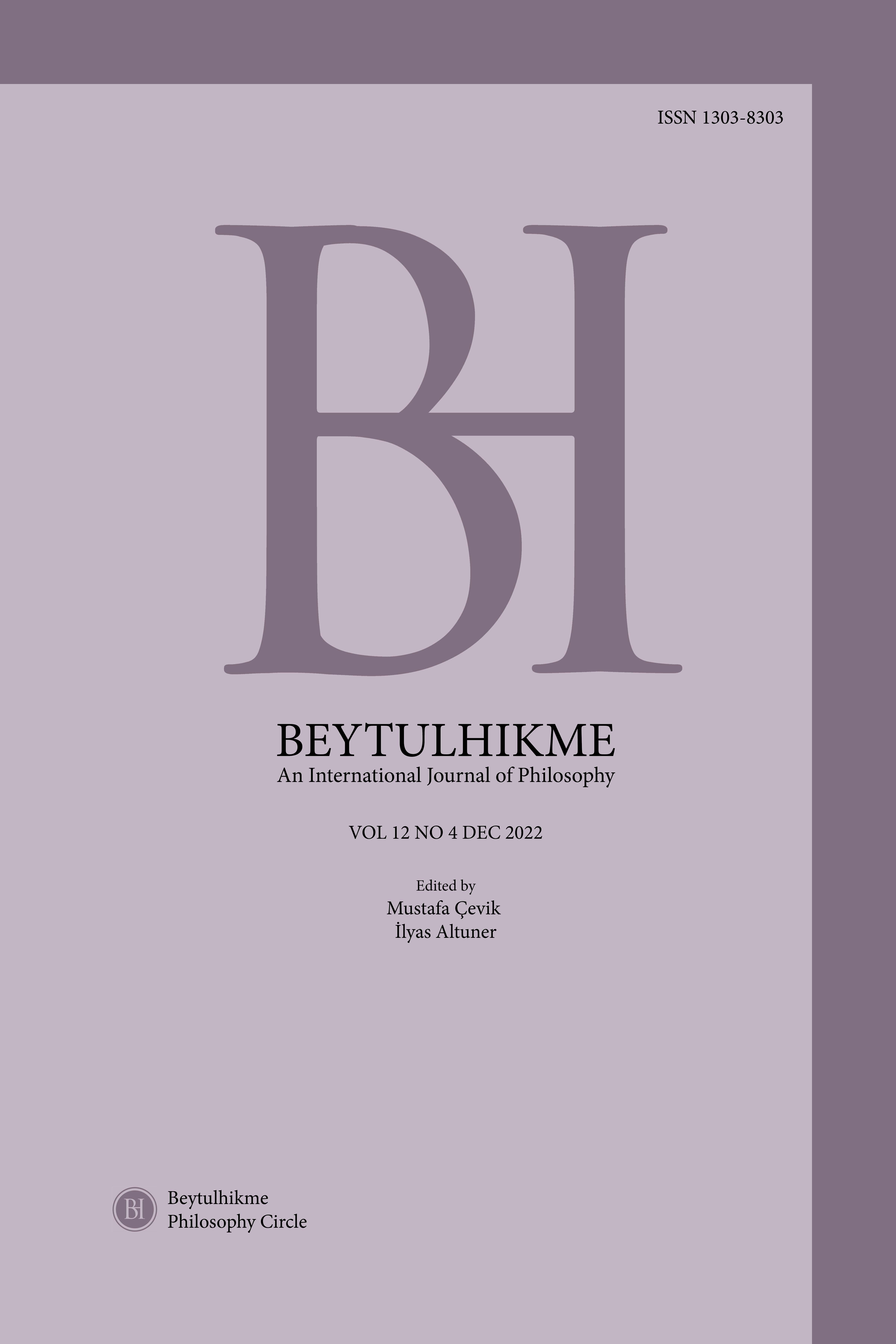Author :
Abstract
Çocuklar için Felsefe (P4C) bir düşünme eğitimi programıdır. P4C eğitimi çocukların felsefi içerikli hikayeler aracılığı ile düşünmesi, sorgulaması ve bunu uygun bir dil ile ifade etmesi üzerine bilişsel ve sosyal bir gelişimi amaçlar. Kendine özgü bağımsız bir ders olan P4C’de okuma, sorgulama, akıl yürütme ve topluluk içinde saygıya dayalı bir biçimde diyalog kurma aşamaları öne çıkmaktadır. P4C eğitimi felsefenin köklü geçmişini de dikkate alarak Sokratik diyaloğu bir öğrenme yönetimi olarak kabul eder. Diyaloğa dayalı, diyalojik öğrenme P4C’nin eleştirel, yaratıcı, işbirlikli ve demokratik ortamı ile örtüşür. Çalışmada ilk olarak P4C eğitimi üzerinde ayrıntılı durulacaktır. Sonrasında P4C için önemli olan diyalog, Sokratik diyalog ve diyaloğa dayalı öğrenme ile onun kendine özgü eğitim ortamından bahsedilecektir. Aynı zamanda diyaloğa dayalı, diyalojik öğrenmenin neliği ve gerekliliği üzerinde durularak, ilerlemeci ve demokratik her eğitim ortamının diyalojik öğrenmeye dayalı olması gerektiği savunulacaktır.
Keywords
Abstract
Philosophy for Children (P4C) is a thinking education. In this program, the main purpose is not to teach children about philosophers, but to encourage children to think critically, creatively, collaboratively and caringly. In this way, children will be able to think, question and express this in a language suitable for themselves through philosophical stories. P4C is a self-contained independent course. Children's skills in reading, questioning, reasoning and respectful dialogue in the community are supported in this course. P4C accepts Socratic dialogue as a teaching method, taking into account the deep-rooted history of philosophy as a thinking education program. Dialogue-based, dialogical learning overlaps with the critical, creative, collaborative and democratic environment of P4C. In the study, firstly, P4C will be discussed in detail. Afterward, dialogue, Socratic dialogue and dialog-based learning, which are important for P4C, and its unique educational environment will be mentioned. At the same time, by emphasizing the nature and necessity of dialogic learning, it will be argued that every progressive and democratic educational environment should be based on dialogic learning.
Keywords
- Alexander, R. J. (2006) Towards Dialogic Teaching (3rd ed.), Cambridge: Cambridge University Press/Dialogos
- Alexander, R. (2018). Developing Dialogic Teaching: Genesis, Process, trial. Research Papers in Education, 33(5).
- Bakhtin, M. (1984). Problems of Dostoevsky’s Poetics (Vol 8.). Minneapolis: University of Minnesota
- Barrow, W. (2010). Dialogic, Participation and the Potential for Philosophy for Children. Thinking Skills and Creativity, 5(2), 61–69.
- Barrow, W. (2015). I think She’s Learnt How to Sort of Let the Class Speak’: Children’s Perspectives on Philosophy for Children as Participatory Pedagogy. Thinking Skills and Creativity, 17, 76–87.
- Boyacı, N. P., Karadağ, F., & Gülenç, K. (2018). Çocuklar için Felsefe/Çocuklarla Felsefe: Felsefi Metotlar, Uygulamalar ve Amaçlar. Kaygı. Uludağ Üniversitesi Fen-Edebiyat Fakültesi Felsefe Dergisi, (31), 145-173.
- Cam, P. (2013). Educational Philosophy and Theory Philosophy for Children, Va- lues Education and the Inquiring Society.
- Cevizci, A. (2010). Eğitim Sözlüğü. İstanbul: Say Yayınları,
- Fisher, R. (2007). Dialogic Teaching: Developing Thinking and Metacognition through Philosophical Discussion. Early Child Development and Care, 177(6–7), 615–631.
- Green, L. (2017). Philosophy for Children and Development Psychology: a Historical Review. (Eds. K. Gregory, M., Haynes, J., & Murris.), The Routledge International Handbook of Philosophy for Children içinde (.ss. 37–45). New York: Routledge.
- Gregory, M. R. (2007). A Framework for Facilitating Classroom Dialogue Philosophy for Children View Project Philosophy for Children Founders View Project.
- Gregory, M. R., Haynes, J., & Murris, K. (2017). Editorial Introduction: Philosophy for Children: an Educational and Philosophical Movement. (Eds: Gregory, Haynes, & Murris). The Routledge International Handbook of Philosophy for Children içinde (pp. xxi-xxxi). New York: Routledge.
- Jensen, S. S. (2021). The Impact of Philosophy with Children from the Perspective of Teachers. Educational Studies doi:10.1080/03055698.2020.1871323.
- Kim, M. Y., & Wilkinson, I. A. (2019). What is Dialogic Teaching? Constructing, Deconstructing, and Reconstructing a Pedagogy of Classroom Talk. Learning, Culture and Social Interaction, 21, 70–86.
- Knezic, D., Wubbels, T., Elbers, E. ve Hajer, M. (2010). The Socratic Dialogue and Teacher Education. Teaching and Teacher Education, 26(4), 1104–1111.
- Lipman, M. (1985). Philosophy for Children. A. L. Costa (Ed.), Developing Minds: A Resource Book for Teaching Thinking içinde (s. 214-216). Washington St.: Alexandria, VA 22314.
- Lipman, M. (2003). Thinking in Education (2.rd ed.). Cambridge: Cambridge University Press.
- Lipman, M. (2011). Philosophy for Children: Some Assumptions and Implications. Ethics in Progress, 2(1), 3–16.
- Lyle, S. (2008). Dialogic Teaching: Discussing Theoretical Contexts and Reviewing Evidence from Classroom Practice. Language and Educatıon, 22(3), 222–240.
- Mercer, N., Dawes, L. ve Staarman, J. K. (2009). Dialogic teaching in the primary science classroom. Language and Education, 23(4), 353–369.
- Mercier, H. (2011). Reasoning Serves Argumentation in Children. Cognitive Development, 26(3), 177–191.
- Murris, K. ve Murris Karinmurris, K. (2016). The Philosophy for Children Curriculum: Resisting “Teacher Proof” Texts and the Formation of the Ideal Philosopher Child. Studies in Philosophy and Education (C. 35).
- Reynolds, T. (2021). Striving for Improvement in DialogicTeaching: A Self-Study of the Dialogic Practices in an English Methods Classroom. Studying Teacher Education, 17(3), 311–329.
- Reznitskaya, A. (2012). Dialogic Teaching: Rethinking Language Use During Literaturediscussions. Reading Teacher, 65(7), 446–456.
- Reznitskaya, A. ve Gregory, M. (2013). Student Thought and Classroom Language: Examining the Mechanisms of Change in Dialogic Teaching. Educational Psychologist, 48(2), 114–133.
- Taşdelen, V. (2014). Felsefenin Gülümseyen Yüzü: Çocuklarla Felsefe. Türk Dili, 14(4), 562-568.
- Topping, K. J. ve Trickey, S. (2013). The Role of Dialog in Philosophy for Children. International Journal of Educational Research, 63, 69–78.
- Vansieleghem, N. ve Kennedy, D. (2011). What is Philosophy for Children, What is Philosophy with Children-After Matthew Lipman? Journal of Philosophy of Education, 45(2), 171–182.
- Vygotsky, L. S. (1978). Mind in Society. Cambridge, MA: Harvard University Press
- Wegerif, R. (2008). Dialogic or Dialectic? The Significance of Ontological Assumptions in Research on Educational Dialogue. British Educational Research Journal, 34(3), 347–361.
- Wegerif, R. (2011). Towards a Dialogic Theory of How Children Learn to Think. Thinking Skills and Creativity, 6(3), 179-190.
